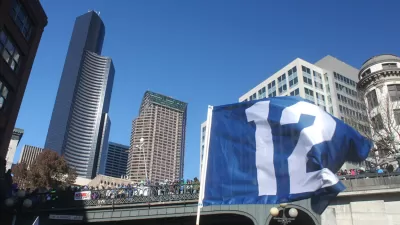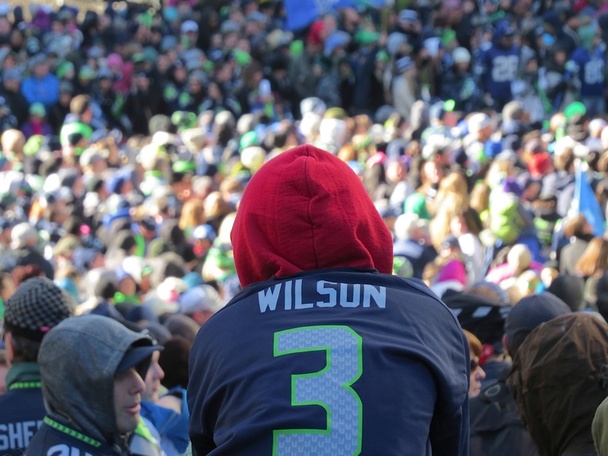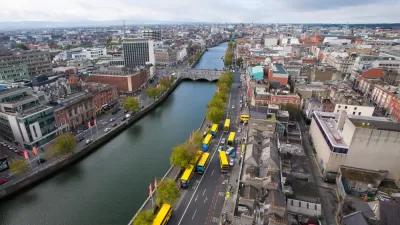Last Wednesday, an estimated 700,000—more than the city's population of 635,000—welcomed the Seahawks home, without major incident. Writing in The Atlantic Cities, Chuck Wolfe describes five lessons for placemaking through words and photographs.

 Wolfe provides an eyewitness summary of an event that brought an estimated 700,000 to downtown Seattle—more than the city's population of 635,000—without major incident.
Wolfe provides an eyewitness summary of an event that brought an estimated 700,000 to downtown Seattle—more than the city's population of 635,000—without major incident.
His thesis:
Efforts to create great urban places have a lot to learn from unifying regional events that cut across silos of culture, age, income, or neighborhood. Such events need not be limited to rebuilding after a superstorm or earthquake—they can be as simple and spontaneous as one city's celebration of its first-ever Super Bowl championship.
- Spontaneous, authentic "placemaking" with a purpose is often best.
- A robust, multimodal transportation network is key.
- A varied crowd of all ages makes a difference and can enhance a downtown core experience.
- One-time events can help crystallize potential alternative uses of urban spaces.
- We are more convertible than we think, and can avoid the politics and process that often inhibits great ideas.
He concludes with the optimism that ruled the day as a catalyst for urbanism going forward:
A center-city environment shared its spaces in the optimal fashion often sought by urban businesses, politicians, and residents, all without any of the usual endless debate and delay. For a day, I saw almost everyone happy, excited and with a common focus. Even if it was about professional football, that's really what good "urbanism" means.
FULL STORY: 5 'Placemaking' Lessons From Seattle's Amazing Super Bowl Parade

Maui's Vacation Rental Debate Turns Ugly
Verbal attacks, misinformation campaigns and fistfights plague a high-stakes debate to convert thousands of vacation rentals into long-term housing.

Planetizen Federal Action Tracker
A weekly monitor of how Trump’s orders and actions are impacting planners and planning in America.

San Francisco Suspends Traffic Calming Amidst Record Deaths
Citing “a challenging fiscal landscape,” the city will cease the program on the heels of 42 traffic deaths, including 24 pedestrians.

Defunct Pittsburgh Power Plant to Become Residential Tower
A decommissioned steam heat plant will be redeveloped into almost 100 affordable housing units.

Trump Prompts Restructuring of Transportation Research Board in “Unprecedented Overreach”
The TRB has eliminated more than half of its committees including those focused on climate, equity, and cities.

Amtrak Rolls Out New Orleans to Alabama “Mardi Gras” Train
The new service will operate morning and evening departures between Mobile and New Orleans.
Urban Design for Planners 1: Software Tools
This six-course series explores essential urban design concepts using open source software and equips planners with the tools they need to participate fully in the urban design process.
Planning for Universal Design
Learn the tools for implementing Universal Design in planning regulations.
Heyer Gruel & Associates PA
JM Goldson LLC
Custer County Colorado
City of Camden Redevelopment Agency
City of Astoria
Transportation Research & Education Center (TREC) at Portland State University
Jefferson Parish Government
Camden Redevelopment Agency
City of Claremont



























